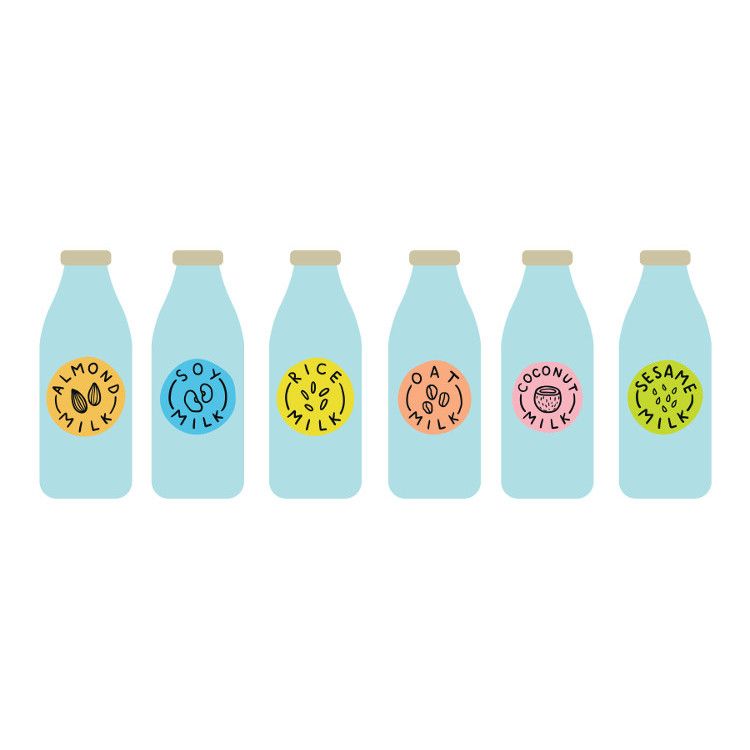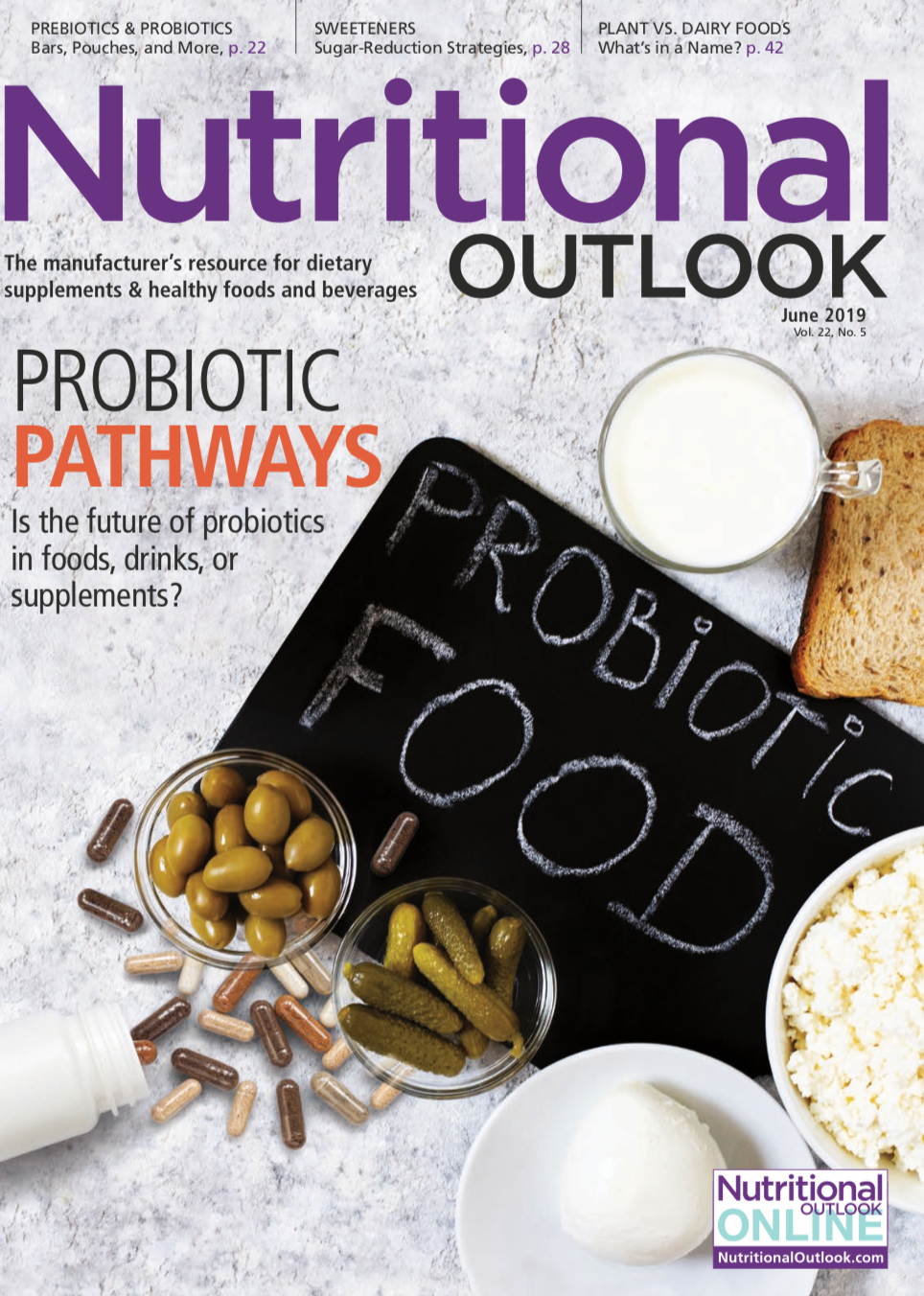Plant versus dairy milk: Should plant-based milks call themselves “milk”?
What’s in a name? When that name applies to an oat “milk,” soy “cheese,” or macadamia nut “ice cream,” the answer may be: the seeds of controversy.
Image Courtesy/Kondratya - Stock.Adobe.com

What’s in a name? When that name applies to an oat “milk,” soy “cheese,” or macadamia nut “ice cream,” the answer may be: the seeds of controversy. For with a bumper crop of plant-based dairy alternatives threatening to crowd out the cow’s-milk originals they emulate, some in the dairy industry are questioning if these products can adopt traditional dairy names.
So, too, is FDA. As part of its Nutrition Innovation Strategy, the agency is “modernizing our standards of identity, which define through regulation certain characteristics, ingredients, and quality of specific foods,” said an agency statement from Scott Gottlieb, who was the FDA commissioner at the time of the strategy’s launch.1
The upshot: All those coconut yogurts and hempseed sour creams taking up prime dairy real estate may have to call themselves something different if FDA tightens its name game.
And whether or not it does so may depend on who protests the loudest, as FDA gave a veritable open mic to consumers, the dairy industry, and its plant-based disruptors to weigh in on the need for new dairy-naming standards. As you might suspect, it’s been a spirited discussion. So we spoke with a few participants to learn what they think consumers should read when they reach into the dairy case.
Can of Worms
You almost can’t blame FDA for putting off updating its dairy standards of identity; spelled out exhaustively in 21 CFR 131 through 135, they don’t make for captivating reading. (A sample from the standard for milk: “Milk is the lacteal secretion, practically free from colostrum, obtained by the complete milking of one or more healthy cows. Milk that is in final package form for beverage use shall have been pasteurized or ultrapasteurized, and shall contain not less than 8¼ percent milk solids not fat and not less than 3¼ percent milkfat…”)
But did FDA realize that in proposing this update, it was opening a can of worms? As far as Alan Bjerga, senior vice president, communications, National Milk Producers Federation (NMPF; Arlington, VA), is concerned, “FDA’s ‘can of worms’ is of its own creation. Because the agency hasn’t enforced its standards of identity for dairy-product labeling for decades, a Wild-West approach that isn’t seen anywhere else in the world has taken hold in grocery aisles.”
Wild West
That Wild-West approach is part-and-parcel of the gold rush for plant-based dairy lookalikes that market watchers predict will keep paying dividends into the future. MarketandMarkets projects a CAGR of 11.4% from 2018 to 2023 for the dairy alternative category, taking it from a value of $17.3 billion to $29.6 billion over the forecast period.2
Yet with many of these products packaged almost indistinguishably from their dairy counterparts, there’s room for confusion as to what kind of “milk” a consumer might be buying. So while FDA “supports choice and innovation in the marketplace,” Commissioner Gottlieb’s statement reads, the agency is also mission-bound to “ensure that the labeling of such products does not mislead consumers, especially if this could compromise their health and well-being.”1
And Bjerga thinks it’s about time. “FDA’s belated attention last year, which came in response to the growing public-health problem of consumer confusion over the nutritional content of beverages that inappropriately use dairy terms,” he says was “a welcome corrective to their own inaction.”
Dairy Down?
Plant-based partisans proffer a different perspective. “‘Big Dairy’ has a powerful lobby and it asked FDA to” enforce its standards, suspects Adam Lowry, cofounder and co-CEO, Ripple Foods (Emeryville, CA). And that, he continues, “has everything to do with the fact that dairy consumption is declining in the U.S. as more consumers look to plant-based, and the dairy industry is playing defense by trying to take away a product identifier that’s been used forever.”
Daniel Fabricant, PhD, CEO and president, Natural Products Association (NPA; Washington, DC), sees a similar impetus. “The only parts of dairy that are growing are ultra-filtered and A2 milk,” he says. “Dairy’s been declining for a long time. And that’s a big part of this discussion. People want to protect their market share.”
Not so fast, counters Bjerga. “The plant-based industry will say that dairy’s just upset because their sales are slipping and they’re worried about eroding market share. Not true. First, we’ve been advocating FDA action for 40 years, through good times and bad. Second, dairy consumption of all products has actually been rising, with butter at a record.” Cheese, too, is trending slightly up, he adds, “despite the imitators.”
Bait-and-Switch
But those imitators are the nut-, seed-, grain-, and legume-based competitors enjoying surprising success at winning over even omnivorous consumers-and it’s worth exploring whether or not they’ve done so by duping shoppers into thinking they’re the “real” dairy deal.
“Consumers are not at all confused about what is dairy and what’s not,” Lowry believes. “In fact there’s case law that proves exactly this, relating to soy milk, where it was shown that no one thinks ‘soymilk’ comes from cows.”
Nor has Fabricant seen data suggesting that the appearance of the term “milk” on plant-based beverages is a bait-and-switch. “I don’t think consumers are necessarily confused” about what’s dairy milk and what isn’t, he contends.
All Milk Is Not Created Equal
But if anything confuses shoppers, Fabricant concedes, “that’s the nutrition aspect.” And here, at least, both dairy and plant-based advocates agree.
“The plant-based industry often likes to say that consumers aren’t confused because ‘they know almonds aren’t a dairy product,’” Bjerga says. “That’s a red herring. The debate here isn’t over that type of confusion. The debate is over confusion on nutritional content-that’s what FDA asked about, and that’s where the facts are on our side.”
Indeed, “Consumer research has repeatedly shown consumers have incorrect perceptions of the relative nutritional merits of dairy versus nondairy products,” Bjerga continues, citing a 2018 IPSOS poll of 2,006 U.S. adults, commissioned by Dairy Management Inc., showing that roughly half mistakenly believe that the main ingredient in plant-based beverages comes from the plant itself (“Such drinks are mostly flavored water,” an NMPF statement counters), while more than a third believe that plant-based beverages have the same or more protein than dairy milk, when the latter can have up to eight times the protein of the alternatives.3
These findings aren’t lost on Lowry, who concurs that “not all dairy alternatives are created equal, and this is where consumers are confused.” As such, his company believes the moniker “milk” should be open to a nondairy beverage-“but only if it has the same nutrition as dairy.”
And that’s just what Lowry and Ripple told FDA: that “a plant-based milk should be able to call itself exactly that, as long as it has the same or better macro-nutrition than dairy milk.” Almond and rice milks, with one-eighth dairy’s protein-or, for that matter, coconut and cashew milk with minimal to none-should not get milk naming rights “because they’re far inferior in nutrition,” Lowry says.
FDA’s Role
That said, banning the use of dairy names on nutritionally equivalent nondairy alternatives “would actually create more confusion, not less,” Lowry believes. “The dairy industry wants milk to be solely ‘the lacteal secretion of a hooved mammal.’ That’s not just gross, but wrong.”
Ultimately, he thinks the agency should keep its eyes on the prize. “FDA’s role is to protect consumers,” Lowry points out. And limiting the use of “milk” to plant-based alternatives with equivalent nutrition to dairy milk-as long as labels make explicit that the milk is from plants, not cows-strikes him as an effective solution.
Bjerga also emphasizes consumer protection. “The FDA was established to protect consumers, and they should do so by enforcing their own rules given the clear marketplace confusion and flouting of regulations that’s taken place via their own inaction,” he says.
Truth or Consequences
But what of any agency obligation to promote innovation, or even free speech? “Adding some nuts to water, throwing in a bunch of chemicals, and calling it milk isn’t ‘innovation,’” Bjerga says. “It’s dishonesty.”
And the free-speech part? The NMPF actually commissioned a study of case law to determine where the boundaries may lie, and in a citizen petition the organization filed with FDA on February 21, it outlined a labeling framework that it feels respects the plant-based industry’s first-amendment arguments.
In a statement regarding the petition, NMPF Executive Vice President Tom Balmer emphasizes that the organization isn’t arguing for any “bans” on speech. Its approach “simply relies on proper disclosures that allow for appropriate, truthful, non-misleading messaging. In the end, products that are ‘milk-like’ or ‘yogurt-like’ are not actual milk or yogurt-and the nutritional distinctions are critical to informed consumer decision-making.”4
Fabricant, who used to direct dietary supplement programs at FDA, has valuable insights, too. “The agency’s goal is to protect and promote public health, and you do that with information based on fact, not on feelings,” he says. And that’s what the Nutrition Facts panel is for: “to get factual information into consumers’ hands. I look at this less as a problem with the term ‘milk’ than as a chance for consumer education.”
Beyond that, he continues, “While you always have to start with freedom of speech, you can’t hide behind it if you’re going to defraud or confuse consumers.”
As it stands, the comment period on the matter has closed, and FDA is combing through the input. While industry insiders are reluctant to spitball FDA’s decision, it never hurts to be optimistic. As Lowry muses, “I think it’ll work out in the end because consumers already know that milk can be dairy or nondairy. Ultimately, it should be the consumer’s call, and no consumer is confused about this. This is entirely industry driven.”
Sidebar: Meat of the Matter
Consumer poll reveals surprising attitudes about what’s in a name.
According to Steve Harman, account director, Ingredient Communications, a provider of PR services to ingredient companies (Crawley, UK), the debate over what plant-based products should call themselves “is an issue that’s been brewing for a few years now, and not just in the U.S.”
Exhibit A: The European Court of Justice recently prohibited the use of identifiers like “milk,” “butter,” and “cheese” for nondairy products, he says, and France now prevents vegetarian products from labeling themselves in the same way as meat. “Much of this is being driven by a meat industry backlash against the growing popularity of plant-based diets,” he notes. “It’s not surprising that the politician who proposed the French ban is a former cattle farmer.”
So with plant-based naming now a political issue, Ingredient Communications wanted to learn where consumers stand and surveyed 1,000 people in the U.S. and the UK to do just that. “Some of the results were surprising,” Harman says, “in particular the fact that 25% of respondents thought manufacturers of vegetarian products shouldn’t be allowed to use meat-related names.”
Also unexpected: the gulf between vegans and vegetarians in their product-naming preferences. “Vegetarians were the least likely to disapprove of meat-related names, with only 18% supporting a ban,” Harman says. “However, vegans were even more likely than meat-eaters to oppose meat-free products using meat-related names, with one in three supporting a ban. They were also the group least likely to buy a meat-free product if it was labeled with a word such as sausage, burger, or steak.”
Further, survey results betrayed a certain skepticism among consumers as to companies’ intentions. “We asked why people didn’t approve of words like sausage or burger being used to describe vegetarian products,” Harman notes, “and the most common reason was that they believed it to be misleading.” Ouch.
So what’s the take-home message? That choosing names for plant-based alternatives “isn’t as simple as a straight fight between meat producers and manufacturers of vegetarian products,” Harman concludes. “What’s definitely the case is that there needs to be a debate, and it needs to include the voices of consumers.”
References:
- FDA website. Statement from FDA Commissioner Scott Gottlieb, MD, on modernizing standards of identity and the use of dairy names for plant-based substitutes. September 27, 2018. https://www.fda.gov/news-events/press-announcements/statement-fda-commissioner-scott-gottlieb-md-modernizing-standards-identity-and-use-dairy-names
- Markets and Markets. “Dairy Alternatives Market Worth $29.6 Billion by 2023.” https://www.marketsandmarkets.com/PressReleases/dairy-alternative-plant-milk-beverages.asp
- National Milk Producers Federation website. “Survey: Only 1-in-5 Consumers Think Plant-Based Imitators Should Be Called Milk.” Published January 22, 2019. https://www.nmpf.org/survey-only-1-in-5-consumers-think-plant-based-imitators-should-be-called-milk/
- National Milk Producers Federation website. “NMPF ‘Road Map’ Petition to FDA Outlines Next Steps in Dairy-Labeling Rules.” Published February 21, 2019. https://www.nmpf.org/nmpf-road-map-petition-to-fda-outlines-next-steps-in-dairy-labeling-rules/

Prinova acquires Aplinova to further increase its footprint in Latin America
April 7th 2025Prinova has recently announced the acquisition of Brazilian ingredients distributor Aplinova, which is a provider of specialty ingredients for a range of market segments that include food, beverage, supplements, and personal care.



















